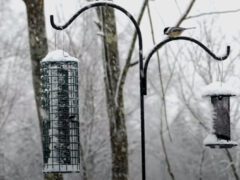A sturdy, medium-sized shorebird with a heavy bill for a plover. It has fairly long legs, large eyes, and a rather large head.
Relative Size
Larger than a Semipalmated Plover, smaller than a Killdeer.

 between sparrow and robin
between sparrow and robinMeasurements- Both Sexes
- Length: 6.3-7.9 in (16-20 cm)
- Weight: 1.9-2.5 oz (55-70 g)
- Length: 6.3-7.9 in (16-20 cm)
- Weight: 1.9-2.5 oz (55-70 g)
















